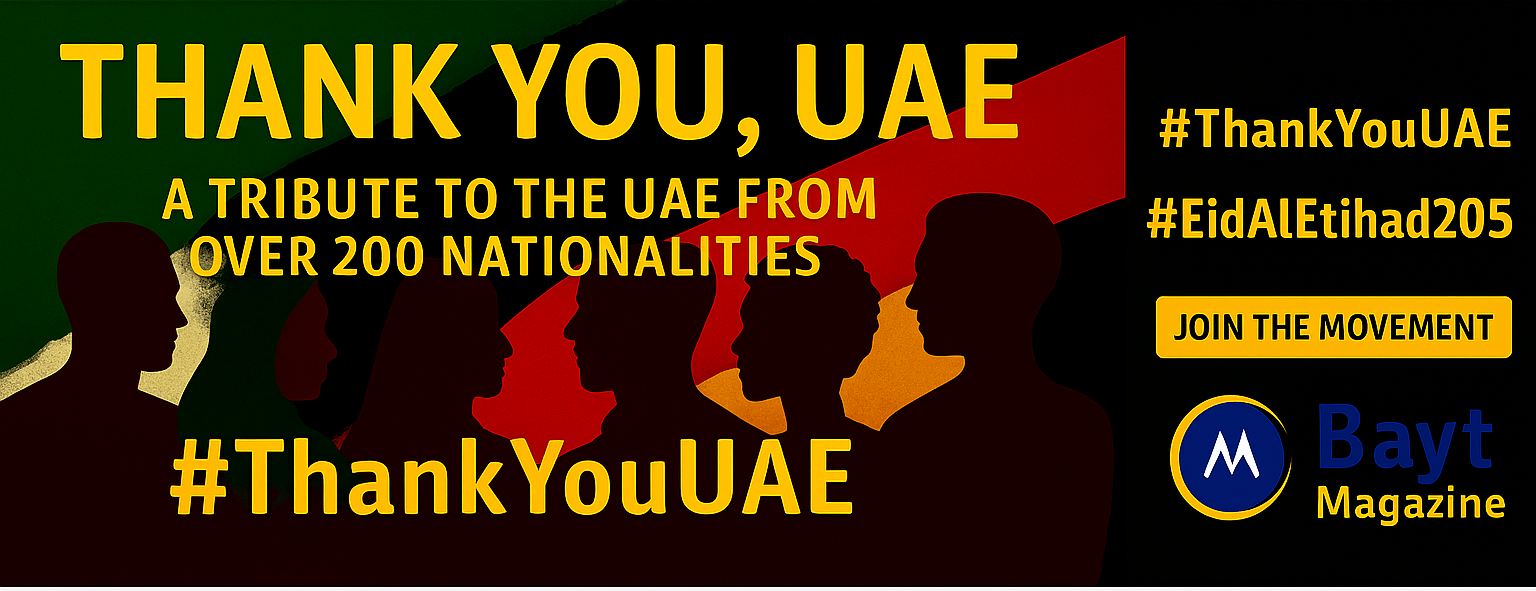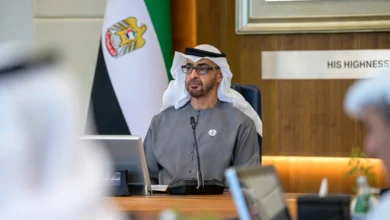
Research Innovation in UAE Universities: Current Gaps and Future Solutions
The UAE shows its steadfast dedication to education with 22% of its national budget going to the educational sector in 2023. More than 1,200 educational institutions boast an impressive 95% enrollment rate. Yet the UAE faces key challenges in education and scientific research.
The UAE education system has made great progress in developing 21st-century skills and digital initiatives. Research trends paint a different picture. Scientific research funding continues to decline. Teachers’ salaries consume 70% of the Ministry of Higher Education’s budget. This leaves few resources to enhance educational processes and research breakthroughs. The education sector struggles to line up its curricula with what the job market needs and promote a knowledge-based economy.
This piece dives into the current research gaps at UAE universities. We look at critical infrastructure limitations and explore ways to boost the nation’s academic research capabilities. Our detailed analysis covers research output metrics, funding mechanisms, faculty barriers, and connections between industry and academia. Readers will discover the challenges and opportunities that shape the UAE’s educational research world.
Current State of Research Output in UAE Education Sector
Research in the United Arab Emirates has grown remarkably in the last two decades. The number of research publications increased 16-fold from 1998 to 2017. Population-adjusted figures show a 6-fold increase. These numbers demonstrate UAE’s dedication to building a knowledge-based economy.
Research Publication Metrics: UAE vs. Global Standards
The United Arab Emirates University (UAEU) published 1,077 research articles during 2022’s first half. Khalifa University led UAE institutions in international media coverage for its research in 2023, publishing 2,218 papers. The UAE’s global research output remains modest though. UAE published 5,300 documents in 2016, while China produced 496,397 and the United States generated 669,204.
The progress looks promising. UAE now ranks 4th among Arab countries for published research with 16,165 documents, showing a 22.7% increase from last year. GCC countries have grown their publication rate by 20% yearly since 2019, surpassing other developed economies. Research output in GCC countries still lags 56% behind standard countries.
Citation Impact and Research Influence
UAE research quality and influence show encouraging signs. UAEU’s publications received 872 citations from 88 countries, with a Field-weighted impact factor of 1.70, according to Scopus data. UAE research gets more citations than other GCC countries and beats the global average citation rate by 74%.
UAE research appears regularly in prestigious journals. UAEU’s publications in 2022’s first half included 26 papers in the top 1% of journals. Another 28.3% appeared in the top 10%, and 67.3% made it to the top 25%. The broader GCC region’s research shows only 6% of publications in top 5% journals, compared to Singapore’s 19% and UK’s 14%.
International partnerships boost research impact significantly. UAE’s health research comes from international collaborations 80% of the time. UAEU creates 76.6% of its publications through partnerships with other UAE universities, showing strong links between collaboration and citation quality.
Distribution of Research Across Disciplines
UAE institutions’ research portfolio spans various fields with distinct strengths. Scopus database shows UAEU’s publication distribution:
- Engineering (11.3%)
- Medicine (9.1%)
- Computer science (7.9%)
- Environmental sciences (7.4%)
- Social sciences (6.0%)
- Biochemistry, genetics, and molecular biology (5.4%)
- Materials and agricultural and biological sciences (4.9%)
Nature Index reports strong performance in physical sciences, chemistry, and earth sciences. Dentistry stands out with publication rates double the global percentage.
Medical research shows impressive growth. UAE’s health research grows three times faster than global rates, with a 25.2% increase from 2017 to 2022. Engineering, medicine, and computer science lead GCC countries’ research, though each country shows unique disciplinary patterns.
Critical Research Infrastructure Gaps
UAE universities still lag behind global standards in research infrastructure despite heavy investment in education. Building a world-class research ecosystem needs specialized R&D facilities, equipment, and skilled staff. These areas show major gaps in UAE’s education system.
Laboratory and Equipment Limitations
Scientific breakthroughs depend on research labs and specialized equipment, but UAE universities face major resource constraints. The UAE spends about 70% of its higher education budget on teacher salaries. This leaves just 30% to improve educational processes and research infrastructure. Such uneven funding affects lab quality and availability.
The UAE has built research centers, but spending on education and research facilities remains lower than other developing nations. Researchers struggle to conduct state-of-the-art studies because they lack proper equipment, especially in fields that need specialized tools.
The Emirates Research and Development Council launched OpenLabs to tackle equipment shortages. Researchers can now find lab equipment at different institutions nationwide, which promotes collaboration. Abu Dhabi’s Advanced Technology Research Council created the ResearchHub Portal to connect researchers throughout the emirate.
Digital Research Tools and Database Access
Limited access to digital research tools and databases creates another major infrastructure gap. Most UAE universities provide specialized databases like Ajman University and Higher Colleges of Technology. Students can access Advanced Technologies & Aerospace Database, Biology Science Database, Engineering Collection, and Environmental Science Database.
The Arab world hasn’t realized the full potential of digital libraries. Many important books aren’t available digitally. Dubai Digital Library launched four years ago as the largest online collection of Arab literature. It holds only 1,600 books in various fields, with half available free. This falls short of a resilient research ecosystem’s needs.
Medical research universities offer specialized resources like AccessMedicine, ClinicalKey, DynaMed Plus, and PubMed. Access varies greatly between schools, which creates uneven research capabilities across UAE’s education sector.
Research Support Personnel Shortages
Finding qualified research support staff poses another big challenge. UAE’s education sector faces well-documented recruitment issues. Hiring managers must meet higher qualification requirements with smaller budgets. Teachers have little time for research because of their heavy teaching loads.
The Ministry of Education’s Teachers’ Licensing System (TLS) adds more requirements for education professionals. This system ensures quality but reduces the pool of qualified candidates who can support research. Cross-cultural training often gets overlooked, yet 86% of expatriate assignments fail because people can’t adjust to local culture.
UAE universities must fix these infrastructure gaps to achieve their goal of becoming a knowledge-based economy built on innovation and scientific excellence.
Funding Challenges Hindering Innovation
Research innovation at UAE universities faces major hurdles due to money constraints. The nation puts AED 14 billion yearly in innovation, but only half (AED 7 billion) goes to Research and Development. This creates real constraints for academic institutions that want to grow their research capabilities.
Government Allocation for University Research
The federal budget for 2025 has reached AED 71.5 billion – the largest in UAE’s history. Research funding takes up a small portion of educational spending. The government directs AED 27.859 billion (39%) toward social development, but only AED 10.914 billion (15.3%) goes to public and university education programs. Research funding depends largely on what individual universities can provide rather than federal support.
United Arab Emirates University funded 210 research projects worth AED 70 million in 2019. Here’s how the projects were distributed:
- 76 projects within university research centers
- 58 projects in basic sciences, humanities and social sciences
- 4 major multidisciplinary projects
- 11 post-doctoral research projects
- 61 research projects for new faculty
Private Sector Investment Patterns
Private sector participation in research funding needs improvement. The Dubai Research and Development Program focuses on getting businesses to launch and fund R&D projects. The Abu Dhabi Chamber of Commerce signed an agreement with UAEU that shows the current lack of private funding options.
The Ministry of Economy bridges private-academic partnerships through programs like the Mohammed Bin Rashid Innovation Fund. This fund helps exceptional entrepreneurs with groundbreaking solutions. These efforts highlight the gap between what industry needs and what academic research can deliver.
Grant Application Success Rates
UAE grant funding remains highly competitive. Zayed University secured 760 internal and external grants between 2018-2023, worth about AED 103 million. Many universities have limits on their internal funding programs. Ajman University caps internal research grants at AED 50,000 per project, though interdisciplinary projects can get up to AED 100,000.
The Emirates Foundation stands as one of the few research funding sources in the UAE. Most grants range from AED 5,000-10,000, with some exceptional cases receiving up to AED 25,000. These modest amounts make it hard for researchers to pursue ambitious projects that need more resources.
Faculty Research Barriers in the UAE Education System
UAE university faculty members struggle with major obstacles that affect their research output. The combination of heavy workloads and poor incentive systems creates an environment where research falls short of global standards, even though institutions try to promote academic work.
Teaching Load vs. Research Time
The academic staff at UAE higher education institutions can barely find time to research because of their overwhelming teaching duties. Research shows that 86% of faculty work extremely long hours – most put in 10-12 hours daily, with evening classes pushing these hours even higher. UAE universities have normalized a culture where working extra hours is expected. Faculty members must balance four demanding roles: they teach, handle administrative work, conduct research, and provide community service. This creates significant stress. A study found that 70% of male faculty spend most of their day at work, which leaves little time to focus on research. The workload difference becomes clear when you look at global measures – assistant professors at typical American universities teach two courses each semester. Their UAE counterparts often teach five courses with minimal support from teaching assistants.
Publication Incentive Structures
UAE universities have created different incentive models to boost research output:
- Al Ain University rewards faculty without limits based on journal quality and Scopus CiteScore rankings
- University of Sharjah requires faculty to publish four research papers yearly in Class A or B journals and 12 papers over three years to qualify for incentives
- Zayed University gives AED 10,000 for working papers and another AED 10,000 for publication in SCOPUS-listed journals
These incentives don’t make up for the time constraints faculty face. The pressure to publish adds more stress, as 92.3% of faculty cope with heavy workloads through their passion for teaching rather than getting help from their institutions.
International Collaboration Obstacles
Research partnerships with international institutions face significant barriers despite their benefits. Trust becomes a major issue in university-industry collaborations because goals often conflict and information security raises concerns. Managing intellectual property creates another challenge. Academic researchers want to share information quickly through publication, while industry partners focus on protecting and monetizing knowledge. Cultural differences between UAE institutions and their international partners lead to communication gaps that hurt collaborative work. Limited finances and human resources make these problems worse, especially when it comes to accessing labs and research equipment.
Industry-Academia Research Disconnect
The UAE’s research landscape faces a major challenge in bridging the gap between universities and industry. Government programs promote innovation actively. The collaboration between academic institutions and businesses remains below expectations, which creates major bottlenecks in the nation’s knowledge economy.
Knowledge Transfer Bottlenecks
Communication and cultural divisions create fundamental problems between universities and industry in the UAE. These issues show up as mutual misunderstanding. Companies often hesitate to hire graduates who lack professional experience. Trust becomes a major concern when industrial partners question whether academic collaborators share their goals or might leak sensitive information to competitors. A newer study, published by, shows that low levels of collaboration between universities and firms continue throughout the country. This happens because of trust issues, organizational culture barriers, and confidentiality concerns.
Commercial Application Gaps
UAE universities struggle to provide industry with the right human resources, which creates a growing skill mismatch. Most companies run their projects without academic input, missing chances to employ innovative methods. Students face similar challenges in their career preparation. More than 60% of Emirati students depend on family and friends for career advice instead of educational professionals. So, almost half of UAE survey participants graduate without knowing their preferred work field or location.
Intellectual Property Management Issues
The relationship between sectors faces more friction due to intellectual property management. UAE University has built an impressive IP portfolio. They have filed more than 445 applications, and over 220 patents have been granted since 2007. In spite of that, different priorities remain an issue. Academic researchers usually want quick publication of their findings. Industry focuses on protecting and monetizing knowledge. On top of that, IP ownership disputes happen when university resources create intellectual property outside regular employment.
Recent programs like the Alliance between industry and academia show promise. SRTI Park’s work with the University of Sharjah wants to close these gaps. They use structured engagement models that turn research into ground solutions.
Research innovation in UAE universities shows remarkable progress despite ongoing challenges. Publications have multiplied sixteen times since 1998. We have a long way to go, but we can build on this progress to reach global standards. The country’s steadfast dedication through OpenLabs and ResearchHub Portal marks positive steps toward building resilient research infrastructure.
UAE universities face several roadblocks in advancing research. Much of the educational budget – about 70% – goes to teacher salaries. This leaves little money for crucial research infrastructure. Teachers don’t deal very well with heavy course loads. They often teach five courses each semester, while teachers worldwide typically handle two. The gap between universities and industry creates obstacles for applying research and sharing knowledge effectively.
These obstacles point to clear paths for improvement. UAE universities need better funding systems that support both teaching and research equally. Mutually beneficial alliances between universities and businesses would help share knowledge and create practical applications. Universities should create specialized research support positions and reduce teaching loads. This would help faculty members focus on meaningful research work.
UAE’s research community continues to grow stronger through better citation rates and work with international partners. The country ranks fourth among Arab nations for published research, showing its rising academic influence. UAE universities can realize their vision of research excellence and state-of-the-art leadership by improving infrastructure, funding, and industry collaboration.




